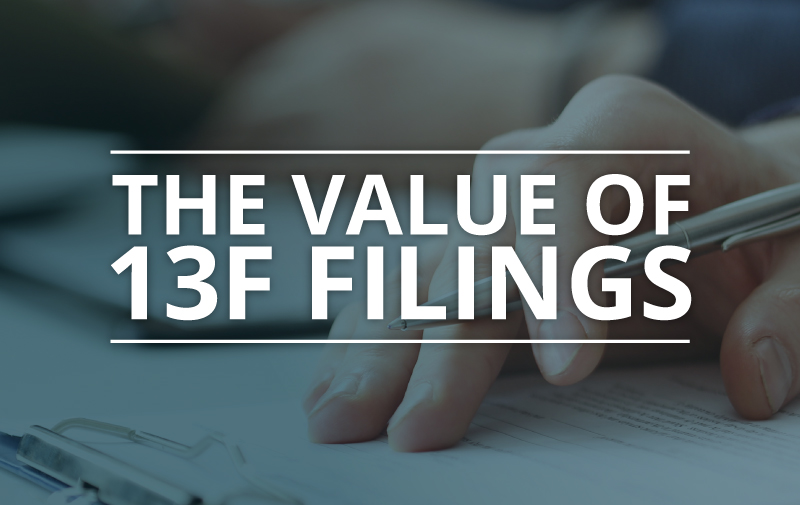Filed by institutional investment managers with at least $100 million in equity assets under management, SEC Form 13F is a quarterly report that must be completed no more than 45 days after the end of each quarter. The report discloses to the Securities and Exchange Commission (SEC) the U.S. equity holdings of each filing entity. While the primary reason for the 13F is for regulatory purposes by the SEC, since the 13F is a public document, these filings can be used to gain insights into where the “smart money” is investing.
Who Files a 13F?
Firms that are required to file 13Fs include mutual funds, hedge funds, trust companies, pension funds, insurance companies and registered investment advisers. The SEC publishes a list on a quarterly basis of the securities that must be included in the filing.
What Is Reported?
It should be noted that funds are only required to report their long positions, put and call options, American Depositary Receipts (ADRs) and convertible notes in their 13F filings. Investments such as bonds, foreign equities and short positions do not have to be reported. 13Fs only report investments on domestic exchanges.
What Is the Value of a 13F to Corporations and Investors?
Form 13F filings can provide investors and the general public with an inside look at the holdings of some of Wall Street’s top stock pickers and their asset allocation strategies. Analyzing 13F filings can potentially allow others to generate investment ideas and to attempt to replicate the strategies of money managers deemed to be successful.
For public companies and their investors, 13F filings lay out who the shareholders are in a company stock and what positions have been bought or sold over the past quarter. The filings can also possibly help explain general investment trends that could be impacting the company’s stock. 13F filings can also be used to help garner a list of potential investors by looking at the holdings of competitors or comparable companies to see which investors are building positions in those stocks.
Limitations to the Insights of a 13F
It is very important to note that looking at a 13F filing in isolation can give a misleading picture for several reasons:
- Some funds might generate returns from investments that do not have to be reported on 13F
- Alternately, some companies might have investors who do not have to report on 13F filings
- Since 13F reports are filed up to 45 days after the end of a quarter, and most managers submit their 13Fs as late as possible because they do not want to tip off rivals about what they are doing, by the time the 13Fs are publicly available the information can reflect stock movements that were made more than four months prior to the filing.
- Short positions are not disclosed in 13F filings and therefore the surface details of an investment disclosure on a 13F can be misleading. An investor could appear to own a significant position in a given security, a particular sector, or a specific stock, but have the exact opposite exposure in reality. For example, an investor might build a large short position in a stock and offset that position by a small long position that allows them to easily trade around a core position. Only the long shares, however, appear in the 13F, thus leading the public to think that investor is long the stock.
While a 13F is helpful to understand what names are interesting to investors and what sort of movement is happening in a particular stock, the limitations of that information must also be considered. Additionally, seeing how professional fund managers have been investing in the previous few months can be insightful, but it is backward looking and often by the time a 13F comes out investors might be looking to the next opportunity.
In summary, it is important to understand that a 13F is only a glimpse of an investment picture, and while it does provide valuable detail, it cannot be relied on to tell the full story and investment decisions should always consider multiple different inputs.
Debbie Kaster, Managing Director


Leave a Reply